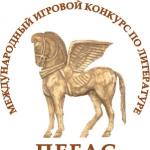Journal warrant 7 accountable persons. Journal order: sample filling. This journal records
Features of using the journal order form accounting we looked at . In this article we will talk about journal order No. 7.
What is order journal 7 used for?
Journal order No. 7 is used to record settlements with accountable persons (Letter of the USSR Ministry of Finance dated 03/08/1960 No. 63).
In this journal-order in unified system records, synthetic and analytical accounting is maintained under account 71 “Settlements with accountable persons”.
Analytical accounting is carried out in a positional manner for separately issued amounts. For each separate line, the advance payment issued, the amount of expenses based on the approved advance report, as well as the returned amount of the unused advance or the refunded amount of overexpenditure are shown. Thus, transactions on one expense report are reflected in only one line.
To obtain synthetic data for account 71, expense amounts on advance reports and the return of unused advances are shown in the order journal in correspondence with debited accounts.
Journal order 7: sample filling
An organization can develop the journal order form No. 7 independently, using the sample.
When automating accounting, journal order No. 7 can be generated automatically based on recorded transactions for settlements with accountable persons on account 71.
To fill out journal order No. 7, we present conditional data for October 2016 and assume that as of 10/01/2016, according to the approved advance report No. 62 dated 09/22/2016, the debt of the office manager D.P. Nesterova is listed. in the amount of 1,200 rubles, due to the fact that the employee has not yet returned the excess funds received on September 20, 2016:
| date | Operation | Account debit | Account credit | Amount, rub. |
|---|---|---|---|---|
| 06.10.2016 | Funds were issued from the cash register to translator N.G. Zlotov. on a business trip | 71 | 50 "Cashier" | 12 000,00 |
| 11.10.2016 | The balance of the accountable amounts was returned to D.P. Nesterova. to the cashier | 50 "Cashier" | 71 | 1 200,00 |
| 14.10.2016 | Advance report No. 68 of Zlotova N.G. was approved. on a business trip | 44 “Sales expenses” | 71 | 15 000,00 |
| 17.10.2016 | The overexpenditure according to advance report No. 68 dated 10/14/2016 was issued from the cash register to N.G. Zlotov. | 71 | 50 | 3 000,00 |
| 19.10.2016 | Transferred from the current account to the storekeeper Y.V. Dronov. advance payment for the purchase of household goods | 71 | 51 “Current accounts” | 2 500,00 |
| 21.10.2016 | Advance report No. 69 of Y.V. Dronova was approved. | 10 "Materials" | 71 | 3 200,00 |
To ensure the implementation of one of the most important and basic functions of accounting, that is, control over the effective use of both production and non-production assets and resources, certain systems are required, the powers of which are enshrined at the legislative level.
 The journal order form is most acceptable for organizations with any field of activity, which is why it is most widely used.
The journal order form is most acceptable for organizations with any field of activity, which is why it is most widely used.
In confirmation of this fact, we can say that all the main automated systems accounting work according to this principle, that is, they are based precisely on the journal-order form.
This form organically combines systematic, chronological, analytical and synthetic accounting. Why do accountants use this set?
Such a relationship can be visualized as follows:
- Analytical accounting is carried out only by those departments that are responsible for receiving and storing inventory, as well as paying salaries and various benefits to employees. carry out this type accounting in monetary as well as quantitative terms.
- Synthetic accounting carried out only in finance department companies. His distinctive feature is that it takes the form of a purely monetary expression.
- Chronological accounting necessary for registration of completed business transactions in the form of records with supporting documents attached.
- Systematic accounting necessary to formalize completed business transactions that differ in their economic content.
If the data entry was carried out absolutely correctly, then the final figures for any type of records should match. Such equality allows the head of the company to assess the actual situation, taking into account all the individual accounts of the organization.
 Accounting registers are called certain journals-orders, notes in which are made exclusively in accordance with the chronological framework. These records are drawn up in the form of any business transactions, and they are associated with both synthetic and analytical methods of accounting.
Accounting registers are called certain journals-orders, notes in which are made exclusively in accordance with the chronological framework. These records are drawn up in the form of any business transactions, and they are associated with both synthetic and analytical methods of accounting.
This form involves filling out special journal orders that appeared as a result of registering notes, which are based on the credit-debit principle, when both a credit for a single account and a debit for the same account are simultaneously issued.
Thus, the total amount for business transactions can be recorded only once, and no repetitions are allowed. Entries in journal order form are made based only on primary receipt documents.
Any journal order is allowed to be opened only for one month, therefore, for more convenient maintenance and filling of them, the accountant who has been appointed responsible for filling it out can divide all accounting registers by types and categories of corresponding accounts by using several notebooks or corresponding books for notes.
Notes and entries can be made during the reporting month, and this can be done directly in the accounting register itself, or in certain auxiliary statements using summation. The latter is only done when there are too many similar accounts for small amounts. In the form of such auxiliary statements, the following documents are often used for reporting in journal-order form:
- special statements that form the basis for the journal-order system;
- certain sheets used to decipher information;
- any types of financial and production parts;
- any tabular form.
You can easily transfer information from all statements at any time, since no special time is set, for example, every week, only on the last days of the month, and so on. When the reporting month comes to an end, all total amounts reflected in the order journal are transferred to subsequent reporting documentation, that is, to the accounting register, which is usually called General ledger.
Order journals are maintained in order to correctly display the balance recorded in the company.
 The general ledger is called the general register, which is part of the journal order form. It lasts for one year. Its main purpose is to control all funds that are in the reporting documents.
The general ledger is called the general register, which is part of the journal order form. It lasts for one year. Its main purpose is to control all funds that are in the reporting documents.
In addition, it is important to analyze the ways in which they circulate, for example, in various correspondent accounts. For each individual account, it is necessary to create a specific page, and for each month a corresponding line is allocated in the sections.
The book is maintained in order to carry out calculations on all final annual lines with each individual account and to compare credit and debit turnover. Correct maintenance of the necessary documentation in journal-order form presupposes the equality of the total amounts of credit turnover and the total amounts of debit turnover.
If absolute equality is not achieved, then it is quite obvious that some accounting register was filled out incorrectly. Therefore, the accountant is faced with the task of identifying this error. After analyzing the information obtained after verification, it is necessary to draw up a turnover sheet and.
The Ministry of Finance has established and recommended its list of certain standard reporting forms for any type of accounting registers in a special resolution, however, despite this, the company has the right to develop its own forms in order to carry out more extensive control and thorough analysis of the information received. Naturally, no significant changes are allowed.
The main and most significant advantage of this system is that it assumes maximum transparency in the reflection of all necessary information, and the way it is maintained is clear, which allows for an accurate and thorough analysis of primary documentation.
What order is the basis
 In paragraph 19 of the Regulations, which regulates accounting, as well as the provision accounting statements V Russian Federation, it is said that all forms for accounting registers are approved by the Ministry of Finance. This provision is part of Order No. 34n, which entered into force on July 29, 1998.
In paragraph 19 of the Regulations, which regulates accounting, as well as the provision accounting statements V Russian Federation, it is said that all forms for accounting registers are approved by the Ministry of Finance. This provision is part of Order No. 34n, which entered into force on July 29, 1998.
Letter #59 was released on July 24, 1992. It contains recommendations for maintaining journal-order records, which is rightfully considered the most widespread in Russia. In addition, it has been implemented in many accounting programs.
The features of the journal-order system include the following principles:
- order journals are filled out strictly in the order in which transactions were recorded in the credit account, and debited accounts are taken into account in correspondence;
- Accountants need to combine synthetic and analytical accounting in a single register;
- any business transaction is reflected in accounting according to the indicators necessary for monitoring and maintaining reports;
- financially and methodologically related accounts must be combined into one journal order;
- A monthly order journal is often used.
Advantages and disadvantages
The main and undoubted advantages of the journal-order system for accounting include the following:
- the possibility of combining synthetic and analytical accounting into a single whole; this means that accounts in analytical accounting are combined with accounts in synthetic accounting, thereby eliminating the need to use various intermediate registers;
- reducing the number and volume of records, that is, accounting registers and the General Ledger are built as rationally as possible using the combination of synthetic and analytical accounting in a single register, which speeds up document flow;
- registers are subject to certain reporting, control and analysis requirements; It follows from this that the accumulated information in the sections that are necessary for maintaining reports excludes the selection of information in last days reporting period;
- the possibility is provided for the widespread introduction of computers into operation;
- responsibilities are distributed more effectively among the employees responsible for this;
- following a specific work schedule;
- improving the efficiency and technique used to produce the report.
It is important to take into account that the journal-order system does not have prospects for its further development, since it involves the use of manual labor by employees.
The disadvantages of the journal-order system are possible difficulties in the construction of certain accounting registers, which are oriented towards exclusively manual entry of information and thereby complicate the mechanization of accounting. In addition, some registers are not interconnected.
You can learn from this article how order journals and the general ledger are compiled.
Regardless of what type of form was chosen by the organization: unified or developed independently. Mandatory register details:
- The name of the document and its form.
- Full name of the institution.
- Start date and end date of journal entries. The period for which it was formed.
- Type of grouping of accounting objects (chronological or systematic grouping).
- Indication of the unit of measurement of accounting objects, or the monetary value of the measurement.
- Note officials, responsible for maintaining the register.
- Signatures of responsible persons.
Registration logs are compiled on on paper, either in in electronic format. For the latter you will need electronic signature, which the document is certified by. Without a signature (electronic or handwritten), the journal order is considered invalid. Corrections are permitted.
Journal order 7: form and sample filling
Important
Journal-order No. 7 is designed to allow effective accounting of settlements that are carried out between the organization and accountable persons for advance amounts issued. The form is required to be completed for all funds issued for reporting.
Info
Their issuance is regulated by the rules for conducting cash transactions. Cash for a business trip is issued with a cash receipt order, and there must be an officially issued order for the business trip itself.
Journal-warrant No. 7
However, for the application of this deferment there are a number of conditions (tax regime, type of activity, presence/absence of employees). So who has the right to work without a cash register until the middle next year? < …
A bank’s refusal to carry out a transaction can be appealed. The Bank of Russia has developed requirements for an application that a bank client (organization, individual entrepreneur, individual) can send to interdepartmental commission in the event that the bank refuses to make a payment or enter into a bank account (deposit) agreement.< … Главная → Accounting consultations→ Accounting Current as of: November 24, 2016
We discussed the features of using the journal-order form of accounting in our separate consultation. In this article we will talk about journal order No. 7.
We prepare a journal of business transactions
To record settlement transactions with persons to whom accountable funds are issued, a journal order of Form No. 7 is provided. The document is required to include all data on advance amounts issued for future expenses to employees of organizations.
Attention
The integrated system of journal entries is the object of synthetic and analytical accounting and analysis. Analytical information for each amount of advance funds issued is taken into account separately.
The corresponding lines of the order journal reflect the amount of the advance payment, its spent part, the costs of paid tax deductions, the returned unspent amount, as well as additional advance payments, if any. Synthetic accounting involves displaying the movement of advance funds in correspondence with debited accounts.
They can only be entered by the person responsible for maintaining the journal. Next to it, you should indicate the date and certify the correctional entry with a signature, with a description of the position and full name of the person responsible.
Filling rules Each magazine has its own filling rules. Let's take a closer look at the basic filling rules. Register of receipts and expenses cash orders(JO No. 1) We make entries based on the cashier’s report, confirmed by the relevant documents (RKO and PKO) at the end of the working day.
If movements at the cash register are insignificant, it is allowed to make entries in the register 3-5 days in advance, according to several reports at the same time. Then in the “Date” field we indicate the period for which we are making records. For example, 3-6 or 20-23. Download Journal Order 2 Entries are made on the basis of bank statements and other supporting documents (checks, reports on the status of a personal account).
Journal order No. 7 for the credit of account No. 71
No.¦ + + + + + + + + + + + + + + + + + + ¦ ¦¦A¦B¦B¦ 1¦2¦3¦ 4¦5¦ 6-9¦ 10¦ 11¦ 12¦ 13 ¦14 ¦15 ¦ 16¦ 17 ¦ + + + + + + + + + + + + + + + + + + ¦ ¦¦¦¦¦¦¦¦¦¦¦¦¦¦¦¦¦¦¦ + + + + + + + + + + + + + + + + + + ¦¦¦¦¦¦¦¦¦¦¦¦¦¦¦¦¦¦¦¦ + + + + + + + + + + + + + + + + + + ¦ ¦¦¦ Total¦¦¦¦¦¦¦¦¦¦¦¦¦¦¦¦ + + + + ¦As presented ¦ From credit account No. 71 in debit¦In the total amount¦ ¦report¦of accounts¦according to the approved-¦ + + ¦report¦ ¦ Date¦Approved- ¦12¦26¦20 ¦81¦etc.¦daily and¦ ¦pre-¦ total amount¦¦¦¦¦¦lifting¦ ¦phenomena¦expenses¦¦¦¦¦¦¦ + + + + + + + + ¦ ¦¦¦20¦21¦22¦23¦24-29 ¦30¦ + + + + + + + + ¦ ¦¦¦¦¦¦¦¦¦ + + + + + + + + ¦ ¦¦¦¦¦¦¦¦¦ + + + + + + + + ¦ ¦¦¦¦¦¦¦¦ ¦ + ¦ ¦Total account credit according to documents rub.¦ + ¦ ¦Accounting value of acquired material assets rub.¦ + + Download in.doc/.pdf Save this document now. It will come in handy.
Journal-order n 7
Settlements for other transactions No. 9 Authorization Non-profit organizations others use. Name of journal-order Contents of operations ZhO No. 1 Cash movement Money at the cash desk of the institution ZHO No. 2 Current accounts ZHO No. 3 Special bank accounts ZHO No. 4 Settlements for loans and borrowings (short-term and long-term) ZHO No. 6 Settlements with suppliers and contractors ZHO No. 7 Settlements with accountable persons ZHO No. 8 Settlements for taxes and fees , on-farm operations, settlements for advances of ZhO No. 10 Main production of ZhO No. 11 Accounting finished products(goods, works or services) ZhO No. 12 Accounting for targeted financing of ZHO No. 13 Fixed assets and depreciation of ZHO No. 15 retained earnings(uncovered loss) JO No. 16 Investment in fixed assets Features of the formation of accounting registers Law No. 402-FZ establishes mandatory requirements to accounting documentation.
Journal-order No. 7
NKT USSR 04/30/1930 No. 169). But sometimes these 11 months are not so spent.< … Сдача СЗВ-М на директора-учредителя: ПФР определился Pension Fund finally put an end to the debate about the need to submit the SZV-M form in relation to the manager who is the only founder.
So, for such persons you need to take both SZV-M and SZV-STAZH!< … При оплате «детских» больничных придется быть внимательнее Листок нетрудоспособности по уходу за больным ребенком в возрасте до 7 лет будет оформляться на весь период болезни без каких-либо ограничений по срокам.
But be careful: the procedure for paying for “children’s” sick leave remains the same!< … Онлайн-ККТ: кому можно не торопиться с покупкой кассы Отдельные представители бизнеса могут не применять онлайн-ККТ до 01.07.2019 года.
Example of filling out order journal 7
Economics textbooks 6. Accounting for settlements with accountable persons Accountable persons are employees of the organization who have received cash in advance for upcoming business trips or household expenses. The list of persons entitled to receive amounts for business expenses on account is approved by the head of the organization.
The issuance of cash on account is regulated by the procedure for conducting cash transactions. The amount of amounts available for reporting for business expenses is limited.
Cash payments are allowed within the limits of no more than 60 thousand rubles. one payment at a time. An employee of an organization who has received money on account is obliged to report on it within the time limits established by the accounting policy of the organization. If the accounting policy provision does not provide for a reporting period for amounts received, then the employee must report on them within three days from the date of receipt of the advance.
Sample of order journal filling 7
Within 3 days (or another period established by the organization), the accounting department receives a report on the funds along with supporting documents. Cash balances go to the cash register, purchased goods go to warehouses.
Reports are checked by accounting employees in form and substance. If the report is not received within the specified period, funds are sought from wages employee. If this is not possible, the lost funds go to an account designated for accounting for shortages. Decrees of the Government of the Russian Federation establish separate norms and procedures for reimbursement of expenses incurred when sending employees to advanced training courses, construction and installation, watch and field work, for activities that are mobile and traveling in nature or while constantly on the move.
To record settlement transactions with persons to whom accountable funds are issued, a journal order of Form No. 7 is provided. The document is required to include all data on advance amounts issued for future expenses to employees of organizations.
Maintaining the form
The integrated system of journal entries is the object of synthetic and analytical accounting and analysis. Analytical information for each amount of advance funds issued is taken into account separately. The corresponding lines of the order journal reflect the amount of the advance payment, its spent part, the costs of paid tax deductions, the returned unspent amount, as well as additional advance payments, if any.
Synthetic accounting involves displaying the movement of advance funds in correspondence with debited accounts. The same part of the document reflects background information on the expenditure of funds to pay daily expenses for business trips.
Journal-order No. 7 provides for the entry of data on advance payments and settlements on them in the amount of 30 transactions over the course of 1 month. If there is no space left for records due to the large number of advances issued, loose-leaf sheets are used that are legally provided for such cases.
(Size: 84.0 KiB | Downloads: 15,969)






